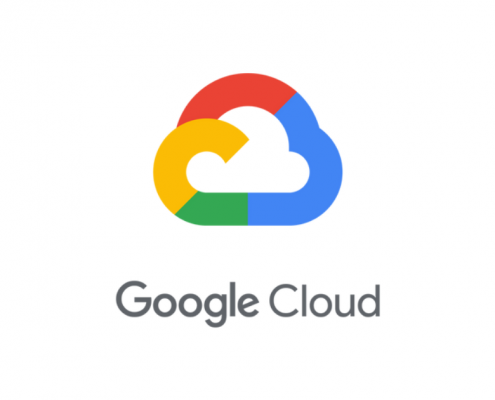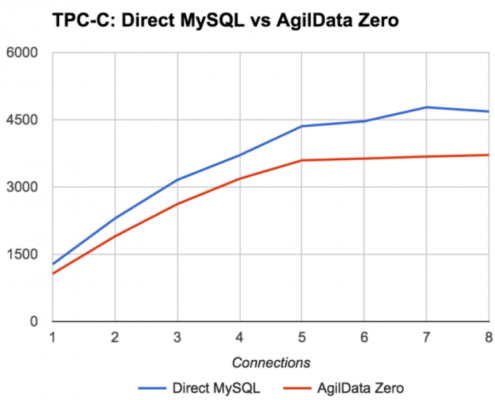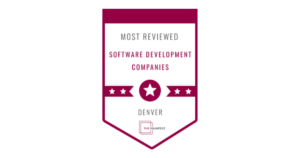 https://www.codefutures.com/wp-content/uploads/2022/01/Google-Cloud-SQL.png
630
1200
danny
/wp-content/uploads/2021/12/Logo_light.png
danny2021-07-20 21:41:002022-01-24 23:26:43Migrate to the cloud with zero downtime with dbShards and Google Cloud SQL
https://www.codefutures.com/wp-content/uploads/2022/01/Google-Cloud-SQL.png
630
1200
danny
/wp-content/uploads/2021/12/Logo_light.png
danny2021-07-20 21:41:002022-01-24 23:26:43Migrate to the cloud with zero downtime with dbShards and Google Cloud SQLGeneric software solutions are ubiquitous in the world of business. They cast a wide net, offering facilitation to an almost infinite selection of company goals. Household names like Windows and Excel have been providing valuable services at affordable prices for organizations of every shape and size, for decades.
However, each company is ultimately unique, and as such, not everyone can get what they need from software with a “one size fits all” approach.
In industries where there isn’t a lot of similarity in workflow between companies, needs can be drastically different for most. If you’re finding that off-the-shelf software leaves a lot to be desired, and you struggle to find a shape that fits you, you might consider getting something made specifically for your requirements. In this case, you might want to try something tailored, or bespoke.
So, what’s the difference between off-the-shelf and bespoke when it comes to software? And how can bespoke software help fill in the gaps that other software creates? Keep reading to find out!
An Off-the-Shelf Application
Software that you can buy in the shop or online is usually made to fit a wide range of company needs. As such, it’s suitable for a vast diversity of applications and can be used to benefit an equally diverse range of organizations. This is off-the-shelf (OTS) software.
For example, Excel is a popular solution for administrative and financial tasks. It offers a huge range of practical uses, and is common in homes, offices, and schools worldwide, despite all of these groups having different approaches to running their organizations. Similarly, when you buy a new computer, there will be software installed on it that functions as its operating system, and this will cover almost everything most users want from it.
These packages are designed to satisfy as many people as possible with their general-use applications.
You can liken this pre-packaged, generalized software to clothing that you buy in a store. While there’s a choice of small, medium, or large, the precise measurements are averaged into something that is easy to mass-produce and will fit almost everyone.
OTS software similarly matches needs. It appeals to a general crowd, and although there won’t be something that fits perfectly, it will be affordable and have utility to the majority of people.
In some cases, though, OTS software won’t cut it. There may be an issue with cost, limitations in the software, or some other way that the product just won’t align with your business model. Even expensive and complex software may be labor-intensive and complicated to customize for use. That’s where bespoke software might be a better option.
A Bespoke Application
For a lot of businesses, software solutions can be designed specifically for the task at hand. Bespoke software is software designed to fit company requirements precisely, and it comes in where OTS software just won’t do the job. Sometimes, the “one size fits all” isn’t as comprehensive as it suggests.
Tailored software is built around the company, and functions as an integrated business process. It’s designed to scale with the company and facilitate its growth as well as streamline internal processes.
This is custom software usually designed in-house, to fit a need, and is created to match the unique approach of the company it’s designed for. Where OTS software usually comes with a lot of redundancy and low specialization towards individual cases, bespoke software is tailor-made to align with company requirements and provide streamlined and scalable facilitation for growth.
This software can take many forms. Here are some examples:
- Self-serve kiosks – supermarkets or fast-food joints are employing bespoke software to allow customers to check out themselves. This kind of requirement can’t be met by anything off the shelf and needs to be specialized for the individual vendor.
- Navigation systems for taxi apps – Innovative navigation systems are a powerful way for ride apps to compete with one another. Intelligent algorithms that can analyze traffic and customer data to make the customer experience better will compete better with others who may be using Google Maps to navigate.
- Video Platforms – Streaming services have a lot of competition too, meaning they have a strong need to identify their customers and reach out to fill their needs. Bespoke user data analysis and video presentation software come in useful for staying on top of the market.
Major Benefits of Bespoke Software Development
The necessity for this custom software arises from the diversity of needs that exist in business. No business is exactly alike, and in modern companies, the software is usually a core element of the workflow. As your company is unique, it makes sense that you would want unique software to leverage that.
Bespoke software, therefore, allows businesses to capitalize on their unique qualities, rather than averaging them out. This makes them more competitive by reducing the opportunities for companies to step in and compete. When software is designed especially for your company, it increases your ability to provide a unique service by creating something that nobody can imitate.
Some major strengths of a completed development are in its ability to be:
- Resilient
- Easy to use
- Easy to back up
Much of the information needed to do these things with OTS software can be hard to get from vendors, so having this available in-company, allows IT to accomplish these things effortlessly, which ultimately saves time and costs.
As you build more of your workflow into a single, specialized system, it can also eliminate the need for staff and increase the productivity of those you have. This not only makes running the business cheaper and simpler but improves the prospects of selling it to others or getting investors interested in the future.
Bespoke software can allow small to medium businesses to apply continuous growth around it, using the software itself to build the business. In some cases, the software can even become the business, expanding the uniqueness and competitiveness of your approach and ultimately lowering overheads too.
Further, a lot of OTS software available is dated and overpriced, simply because there isn’t a lot of competition in their field. This creates a market for the developers of a bespoke system to end up marketing it elsewhere.
With bespoke software development, opportunities arise to become a software vendor of the solution. If it works for someone, there’s a good chance it will work for others with similar needs, and this means there’s a marketable product that can be passed on.
So, if having your own software seems like a no-brainer to almost anyone, why isn’t everybody using it? The reality is that it’s not as simple as it might sound.
Disadvantages of Bespoke Software
The major factors affecting the adoption of bespoke software are cost and utility, followed by challenges around maintenance, security, and urgency of need. Let’s break it down.
- Cost
By far the largest concern in businesses is the financial burden of taking on a new project. Bespoke software is no exception and many will be turned off by the reality of its cost. There’s no way around this: It is expensive. While the cost ideally reflects the value – especially if your business is in a sector where OTS software doesn’t fully meet your needs – this is a prohibitive factor in many cases, especially for smaller companies.
This cost comes from both an IT and Engineering standpoint. IT needs to know that the software will work with their infrastructure; they need to be involved in the integration and application of the software, and then there need to be qualified and competent developers involved.
Usually, the smallest team to build a custom software solution will comprise of at least two people; one who writes the code and the other plays the role of an analyst. While SaaS companies may feel there will be qualified people already on board, the importance of expertise here cannot be overstated.
Both of these roles require such advanced skill and experience that they will likely set you back six figures, and this is only for small businesses. Large enterprises may need teams of hundreds, even thousands of developers!
Paying less at this stage will likely cost you more in the long run; in maintenance and security issues, or simply from just poor-quality work that does not meet your needs.
- Bespoke Application
If you’re a franchise or some other form of business that follows a common system or work that is similar to many other types of business, there may well be an OTS that is optimal for you.
The nature of OTS software is that it reaches a wide bell curve of needs, and if your needs sit right in the middle of that bell curve, bespoke software could be a waste of money. So, if ‘good enough’ really is good enough, it may not be worth the investment for something else.
- Maintenance
Ongoing updates are needed to keep up with changes in your business. This is relatively simple with OTS, as the vendor usually takes responsibility for it. Further, staff will join the company with a prior understanding of the software you’re using, and people can leave the company without taking the only knowledge of the system with them. This means there’s no single point of failure, as there may be with custom software.
Further, OTS software comes with regular updates based on data from much larger user bases, whereas a custom software approach needs regular monitoring and adjusting by qualified people.
- Security
With OTS software, security and support are part of the package. With bespoke software, all of these factors need to be well-considered and designed into the build. This not only brings us back to the importance of expertise but also means the company is ultimately taking full responsibility for all the inherent risks and may need a specialist for reviewing and monitoring these areas.
This further adds to the cost, long-term and when weighed against the benefits provided by the software, maybe doesn’t seem like a good deal.
- Speed
A good bespoke service is going to take a long time. To do the job properly will take months, maybe even years depending on the scale and utility of the build. If you’re looking for something urgently, building it isn’t the way to go.
- Justification
Combining all these considerations and more is the first step toward figuring out if a tailored build is right for you. Even if all of the above sounds great and is affordable, there’s still the element of justification. Designing and adopting bespoke software may cost you more than it’s going to be bringing in. It’s important to go over the current costs of working with your system and balance that against the cost of changing it.
If OTS software is almost enough for you, but you’re looking for something a little more tailored to your needs, you might be able to find a hybrid solution.
Hybrid Systems
Clearly, there is a lot to consider before settling on a bespoke software plan. However, it might be possible to balance these considerations in a way that enables you to pick and choose from the pros and cons of both bespoke and OTS software. Hybrid solutions take elements from OTS software and build them into custom designs.
Customer relationship management (CRM) is a good example of software that is often customized into hybrid packages. From an OTS template, devs can assess the specific needs of an organization and tweak components to match them. This brings in a lot of the benefits of a tried and tested OTS system, with the added benefits of shedding redundancy and fine-tuning it to work directly with the company.
This also allows you to settle on a comfortable medium of maintenance and security – tailoring to a high degree brings with it more complexity, whereas tweaking it just a little can maintain confidence in the inherent robustness of the system while giving you some level of customization.
Hybrid systems can be as simple as adding a company logo to system screens, or as complex as filling in all content around a predesigned template, such as in website builders.
These software applications are often aimed at large companies looking to pick and choose from various available modules or add-ons, or they can be open-source frameworks designed to allow in-house customization. Some are even no-code templates for ease of use, but at the cost of customization range.
Whichever way, hybrid methods will take resources to adjust and manage, but substantially less so than an entirely bespoke solution. On the other hand, they will be ultimately more limited than a genuinely custom build, so it’s important to balance these considerations against your requirements.
If you’re still thinking about going totally bespoke, have a look at some of these recommendations:
How to Go About It
There are a few handy tips worth following on the path to investing in a bespoke software system.
- Analysis
You must find a justification for your bespoke software before you invest in it. Do this by deeply analyzing your requirements with input from multiple departments and balancing them against the available OTS options. Custom software is an attractive concept but if it doesn’t bring an agreeable ROI, it’s simply a bad choice.
Who are the users of this proposed software, and how will it help them accomplish their goals better? What are your budget and time constraints? How will you manage issues such as reporting and integration? All of these questions need to be answered before committing.
- Find experts
As mentioned, it’s crucial not to scrimp on the expertise when looking for bespoke software. Developing custom software is an art in itself, and because of its specificity, it comes with challenges that not many have faced before. Going cheap at this stage could be a waste of money at best and an enormous financial mistake at worse.
CodeFutures may be able to offer innovative solutions to your specific needs, covering numerous capabilities such as intelligent AI, application modernization, and custom software engineering.
- Form a consortium
Since the cost of designing your own software can be exceptionally high, it’s possible to find a way to distribute it.
If you’re in an industry that works in a specific way, and your company runs similarly to other businesses in the area, you could consider the option of gathering together a collection of companies to pitch in and contribute to the design of bespoke software that covers all of their needs. This spreads the cost out significantly and could easily reduce your contribution to 10% of what it would otherwise be.
- Focus on Maintenance
If you’re hiring from outside, the system must be designed with as little need to bring people in to run it as possible. This means working closely with IT during the build, recording and modifying SOPs as the software is formed, and generally making sure that enough people know how it works to avoid additional costs in the future.
Learning how to manage the system as it develops can save countless contractor fees down the line.
You’re never going to be free from maintenance requirements, but the more you interact with the build as it’s coming along, the longer your dedicated teams will be able to keep it running from their understanding of how it works.
Conclusion
Once companies understand the strengths of bespoke software, they are usually very rapidly interested in it. While OTS software may be good enough for most of their needs, they understand that there’s no such software available that is perfect for them.
The benefits of having a perfect system are enormous; as an extension of the company itself, bespoke software makes light work of common business functions and facilitates a manner of impressive growth that nobody can copy.





